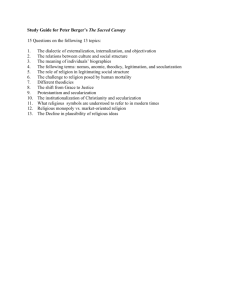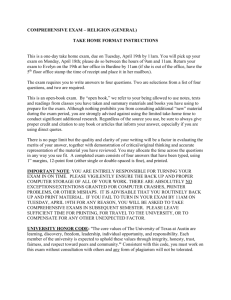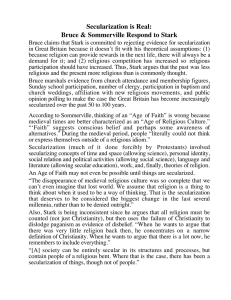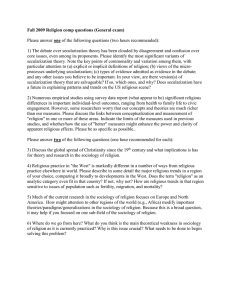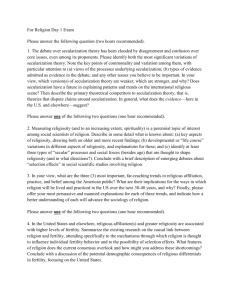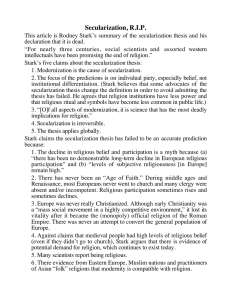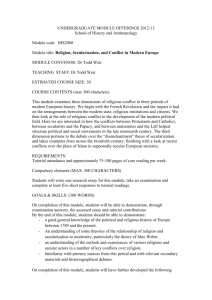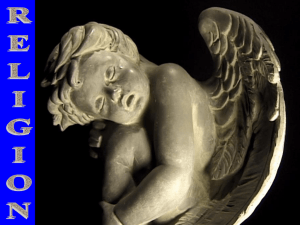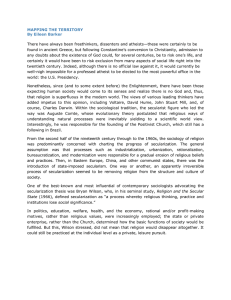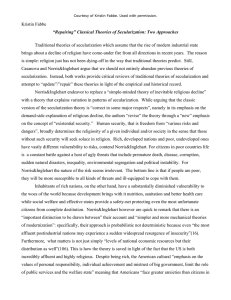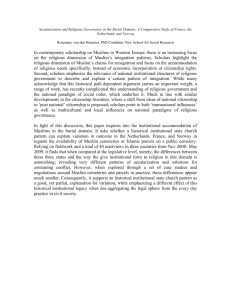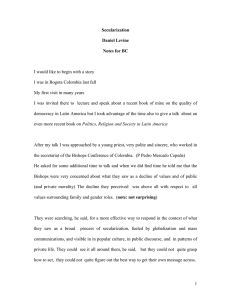The “Religion of Secularization” and the History of Religions
advertisement
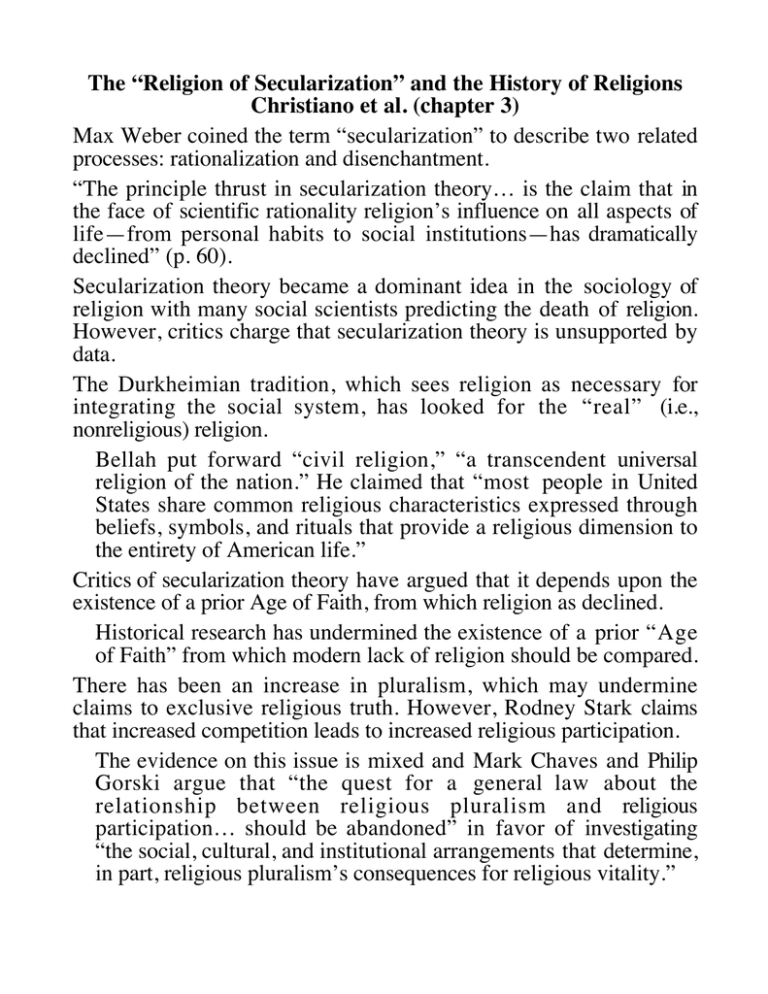
The “Religion of Secularization” and the History of Religions Christiano et al. (chapter 3) Max Weber coined the term “secularization” to describe two related processes: rationalization and disenchantment. “The principle thrust in secularization theory… is the claim that in the face of scientific rationality religion’s influence on all aspects of life—from personal habits to social institutions—has dramatically declined” (p. 60). Secularization theory became a dominant idea in the sociology of religion with many social scientists predicting the death of religion. However, critics charge that secularization theory is unsupported by data. The Durkheimian tradition, which sees religion as necessary for integrating the social system, has looked for the “real” (i.e., nonreligious) religion. Bellah put forward “civil religion,” “a transcendent universal religion of the nation.” He claimed that “most people in United States share common religious characteristics expressed through beliefs, symbols, and rituals that provide a religious dimension to the entirety of American life.” Critics of secularization theory have argued that it depends upon the existence of a prior Age of Faith, from which religion as declined. Historical research has undermined the existence of a prior “Age of Faith” from which modern lack of religion should be compared. There has been an increase in pluralism, which may undermine claims to exclusive religious truth. However, Rodney Stark claims that increased competition leads to increased religious participation. The evidence on this issue is mixed and Mark Chaves and Philip Gorski argue that “the quest for a general law about the relationship between religious pluralism and religious participation… should be abandoned” in favor of investigating “the social, cultural, and institutional arrangements that determine, in part, religious pluralism’s consequences for religious vitality.”
